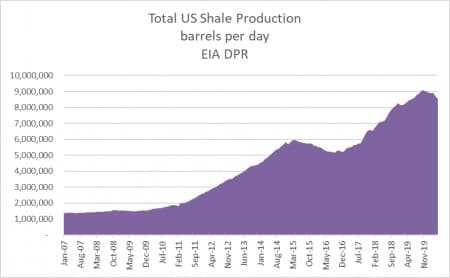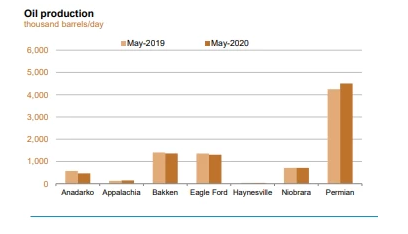The EIA expects U.S. shale oil production to drop next month to 8.526 million barrels per day in the seven most prolific shale basins in the United States, according to new data published on Monday.

The forecast for May for a 182,673-average barrel per day drop in oil production is expected to be the second largest drop according to EIA data dating back to 2007. The largest drop in oil production, according to the EIA, should be this month, down 193,625 barrels per day from March.
The Drilling Productivity Report shows six weeks of sizeable declines, shedding more than a half a million barrels per day—546,622 barrels—since December 2019.

Nevertheless, oil production across those seven basins are still trending sharply upward overall over the last decade.
And year over year, oil production is still up, despite the sharp declines over the last few weeks.
Oil demand and oil prices have declined sharply in recent months, with global oil demand destruction thought to be somewhere near 30-35 million bpd. Meanwhile, oil prices have been particularly volatile, with WTI trading under $30 for almost a month.

The EIA expects the Permian basin, responsible for more than half of the reported shale production, will see a dip of 75,700 bpd in May, to 4.5 million barrels per day. The second largest basin, the Eagle Ford, should see a drop of 34,790 barrels per day, to 1.3 million bpd.
All basins are expected to see a production drop for May, according to the EIA.
And it’s not just oil that’s being hit; natural gas production, too, is expected to decline next month.
The EIA sees natural gas production in the seven basins dropping by 869 million cubic feet per day, to 83,158 million cubic feet per day.